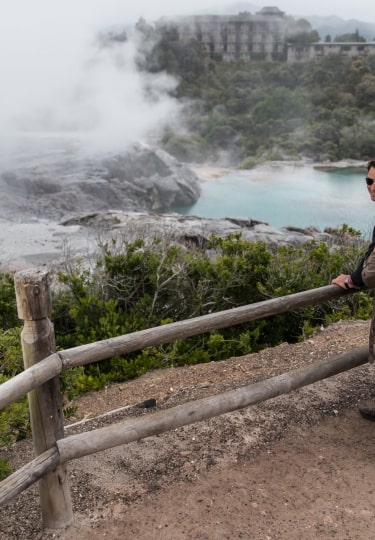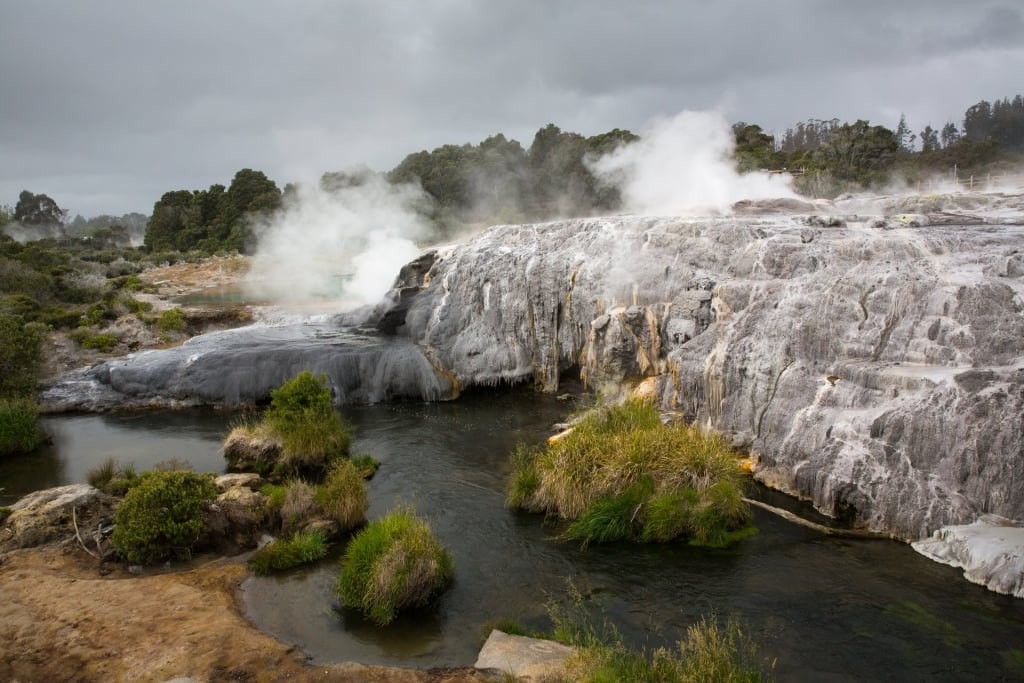The North Island of New Zealand is, like its southerly sister, a relatively small landmass that punches well above its weight in terms of stunning coastline, impressive geothermal phenomena, and, of course, adorable flightless birds.
But it’s not just a country-sized national park. While colonialism shaped much of how modern New Zealand looks today, its indigenous Maori culture remains vibrant and accessible. This is especially true on the more populous North Island, at places such as the cultural center, Te Puia, near the city of Rotorua.
Read on to discover the most incredible places to visit when on a trip of a lifetime to the North Island of New Zealand.
Hawke’s Bay, Napier
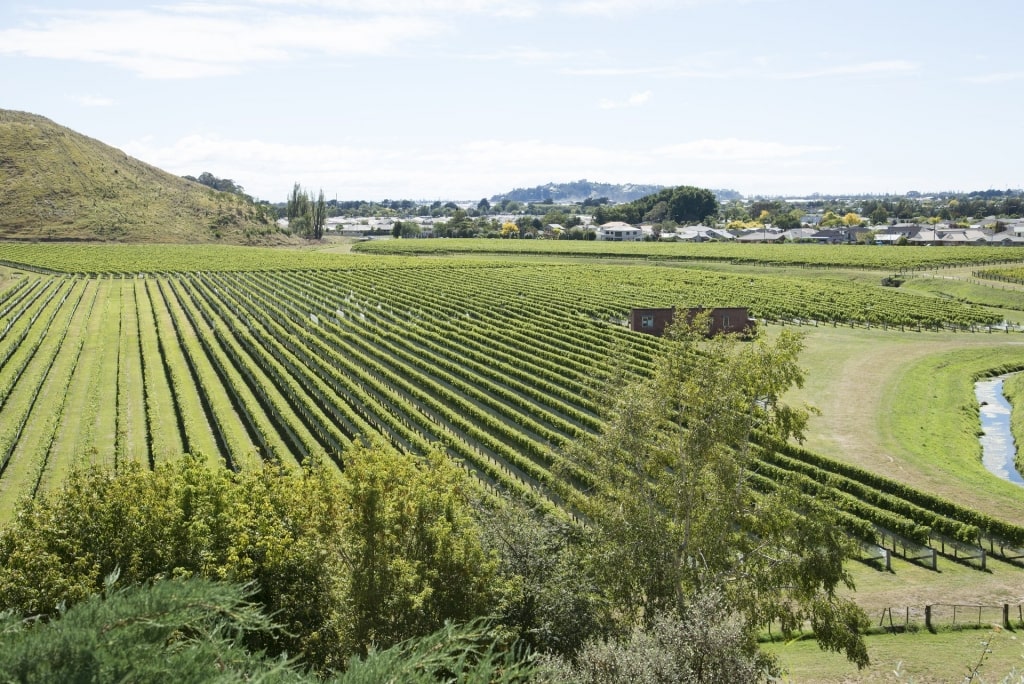
Hawke’s Bay, Napier
A bucolic stretch of alluvial plain, soft hills, and gravelly soil, Hawke’s Bay is one of the best wine regions in New Zealand. It’s a hot spot for Cabernet Sauvignon and Chardonnay-based wines in particular, with a wine-growing history that stretches back to 1851.
Sited on the eastern part of the North Island that looks as if it was an apple that’d had a bite taken out of it, Hawke’s Bay, like the famed Marlborough Region on the South Island, is ideal for bike-based wine tours. The level terrain of its Heretaunga Plain offers 125 miles of easy-grade cycle trails leading to over 30 top wineries.
Read: Best Wine Cruise Destinations
Not a wine-drinking cyclist? The region’s coastal areas and hinterland offer more than just complex aromas and a smooth finish. A circumnavigation of the varied landscapes surrounding Waikaremoana Lake is deservedly one of New Zealand’s Great Walks, while the panoramas from Te Mata Peak are breathtaking.
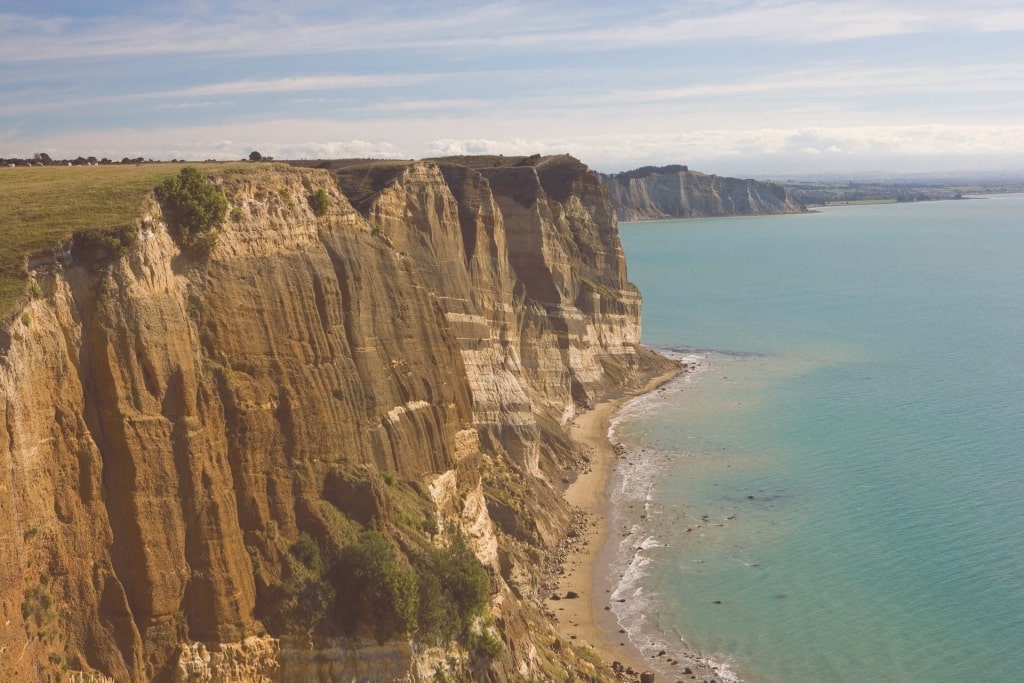
Cape Kidnappers in Hawke’s Bay, Napier
Meanwhile, Cape Kidnappers—less alarming than it sounds—is the home of the country’s largest mainland colony of gannets. If you weren’t a bird-watcher before you arrived here, you will be when you leave.
Sky Tower, Auckland
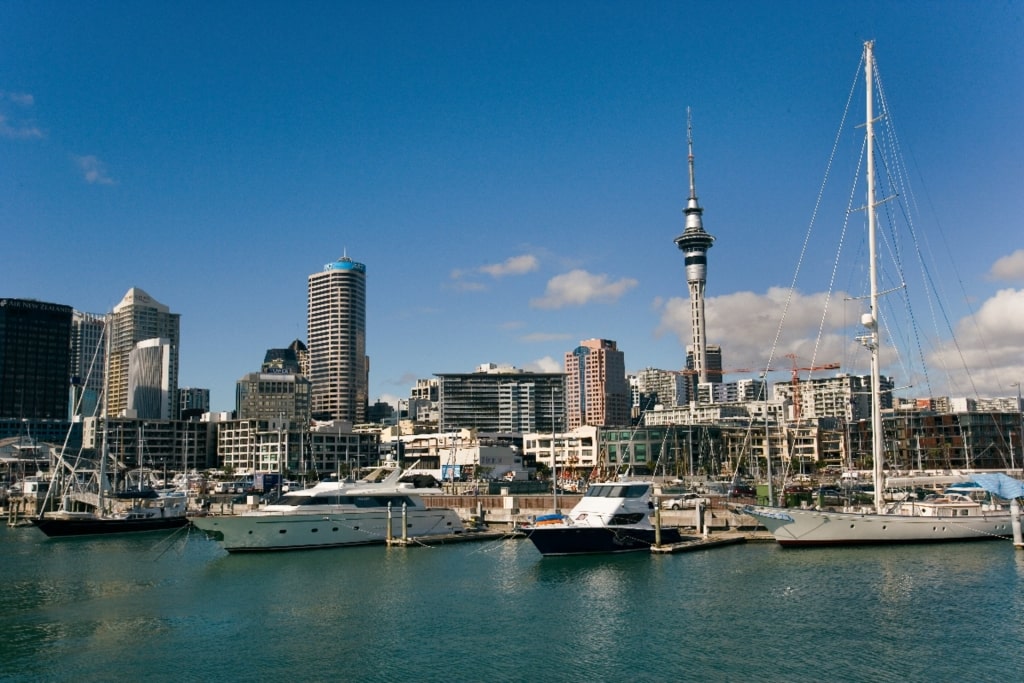
Auckland
However you approach Auckland, you can’t miss the Sky Tower, one of the best landmarks in New Zealand. This concrete telecoms mast is the defining structure of New Zealand’s largest city—a 328-meter hypodermic needle capped with an observation deck, cafe, and the country’s only revolving restaurant. For added kudos, it’s also the tallest free-standing structure in the Southern Hemisphere.
While a visit to the Sky Deck, with its expansive vistas over the port, the city, and distant volcanoes, might be enough for most, this is New Zealand. The Kiwis have added high-adrenaline elements to make the experience even more memorable. Head out of the glassed-in security of the Sky Deck for a SkyWalk—an experience that allows you, in a safety harness, to take a walk around the outside of the tower.
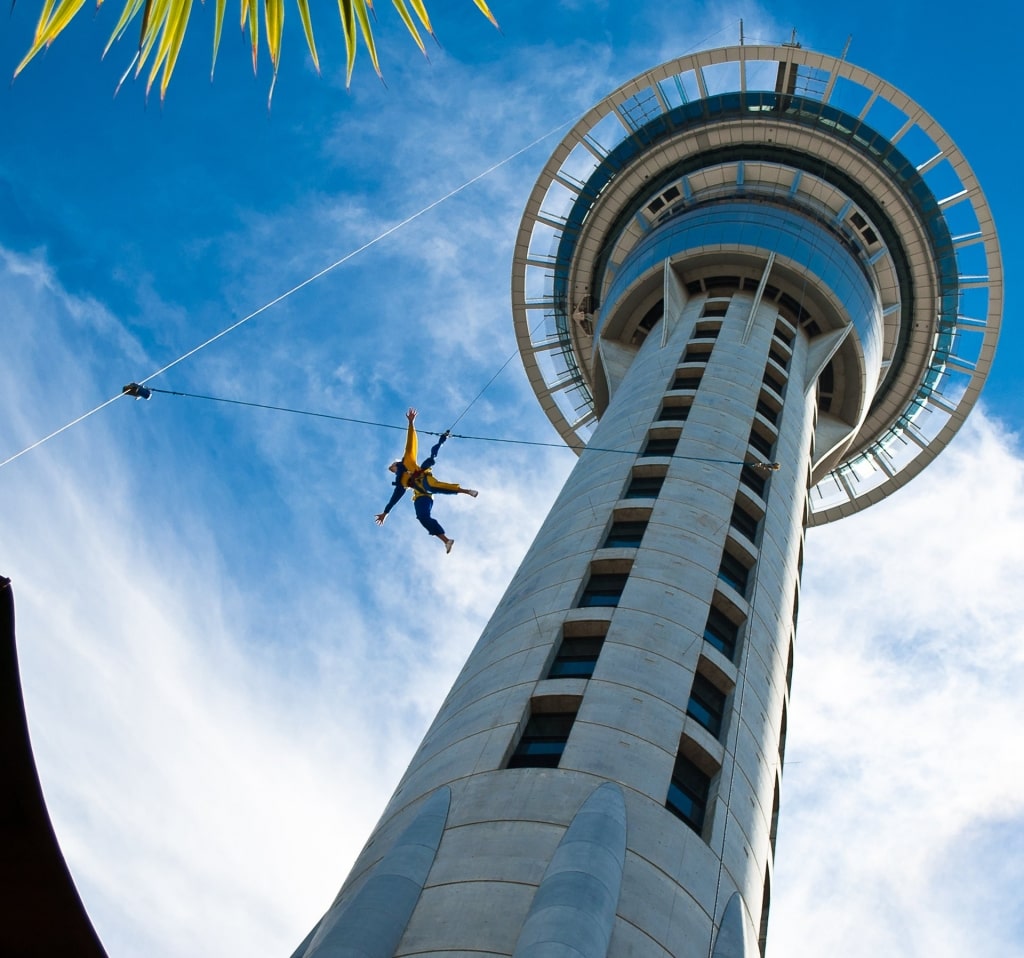
Sky Tower, Auckland
Too pedestrian? Then the SkyJump might be the one for you—a 192-meter base jump towards the city streets below. If that all sounds terrifying, then you also might want to avoid heading up the Sky Tower in high winds. Its resilient design ensures a hearty sway when the weather’s blowing a gale.
Te Puia Thermal Reserve, Rotorua
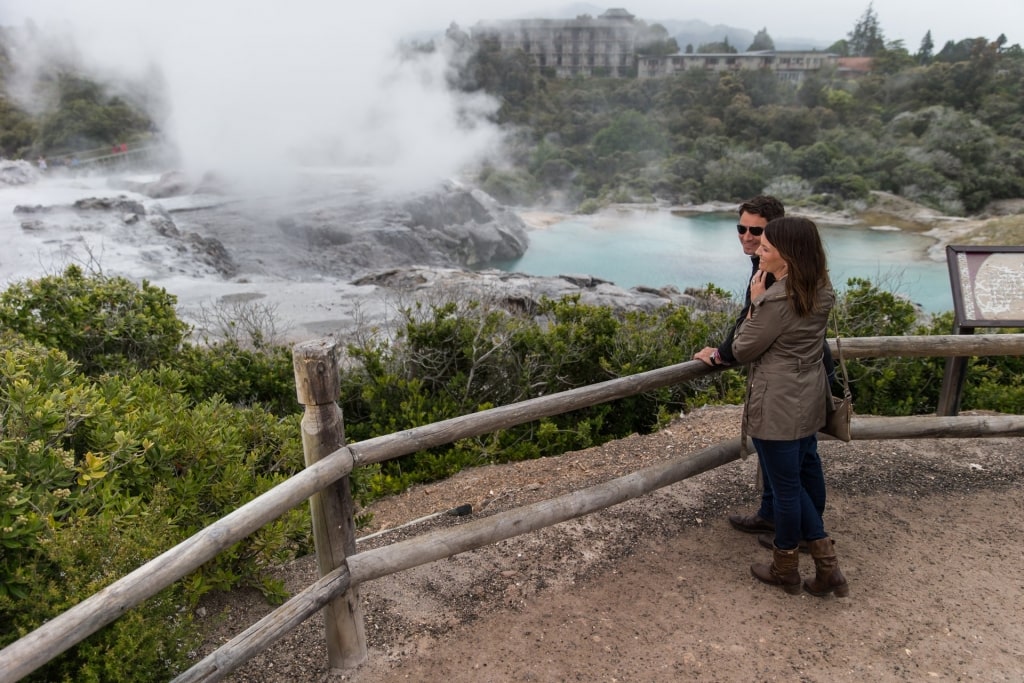
Te Puia Thermal Reserve, Rotorua
Named for a medieval Maori fortress, Te Puia Thermal Reserve is located in the Taupo Volcanic Zone on the southern edge of Rotorua. It combines the Southern Hemisphere’s largest natural geyser (alongside other geothermal phenomena), the cuddly national bird (in its own dedicated sanctuary), as well as a cultural center dedicated to the indigenous Maori culture.
The thermal reserve is a steaming, sulfurous water show tucked away in a small valley. Take a guided tour, where you’ll get a headstart on your Te Puia cultural induction. A warm mist pre-empts your arrival at the geysers, with the largest, Pohutu, offering an hourly eruption spurting up to 100 feet in the air.
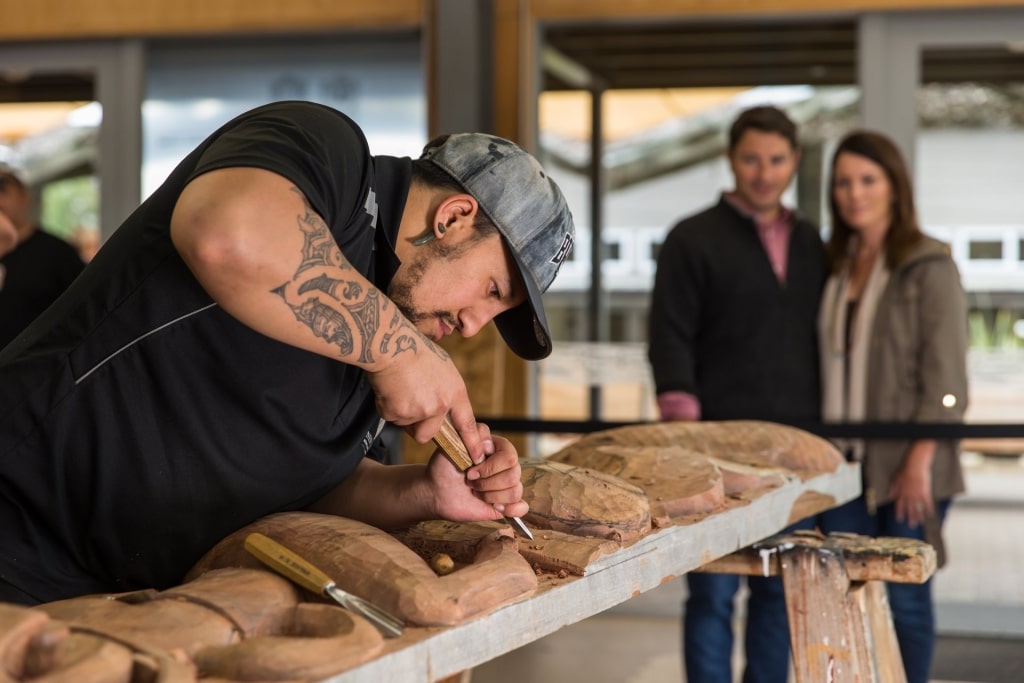
Maori village in Rotorua
When you’ve had your fill of boiling mud and steaming lakes, take a deep dive into Maori culture. Among cultural performances and activities for younger members of your group, Te Puia is home to national schools for carving and weaving, and it’s possible to watch the master craftspeople demonstrating these traditional artforms.
Read: Top Cultural Attractions
Waipoua Forest, Northland
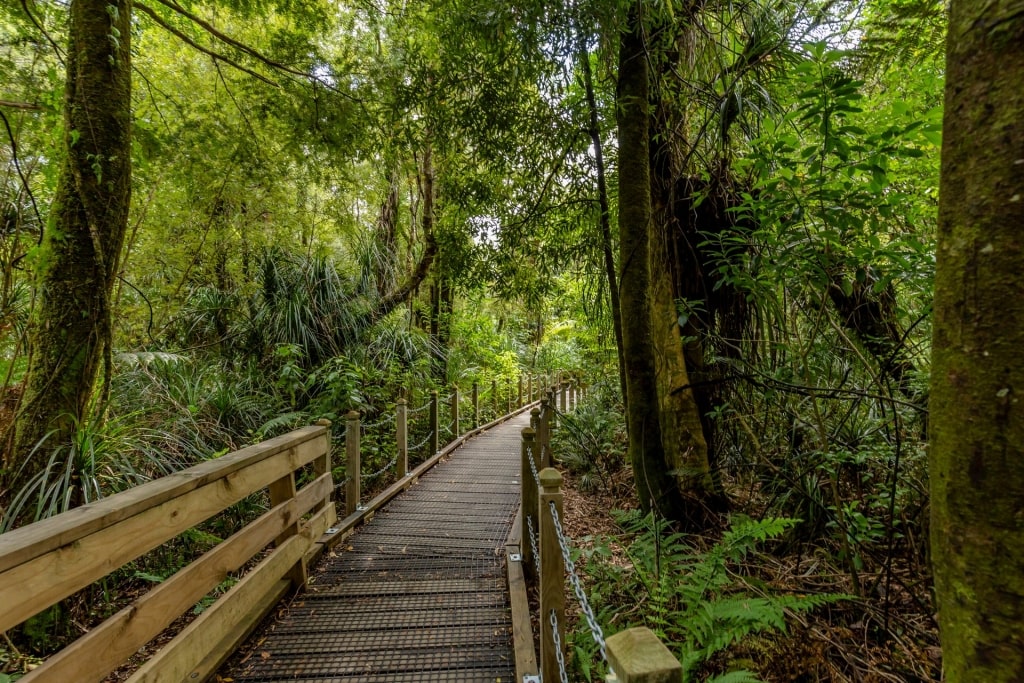
Waipoua Forest, Northland
Gorgeous, biodiverse rainforest is to New Zealand what mountains are to Nepal, so what makes Waipoua Forest one of the essential places to visit on the North Island?
Waipoua, a few hours’ drive north of Auckland, is one of the few remaining preserves of the country’s kauri trees. This ancient variety of pine is capable of living for over two millennia and inching—slowly—up to heights of over 50 meters. Previously widespread throughout the North Island of New Zealand, the kauri forests were plundered for their high-quality timber that’s ideal for building and, thanks to the ramrod-straight trunks, for sailboat masts.
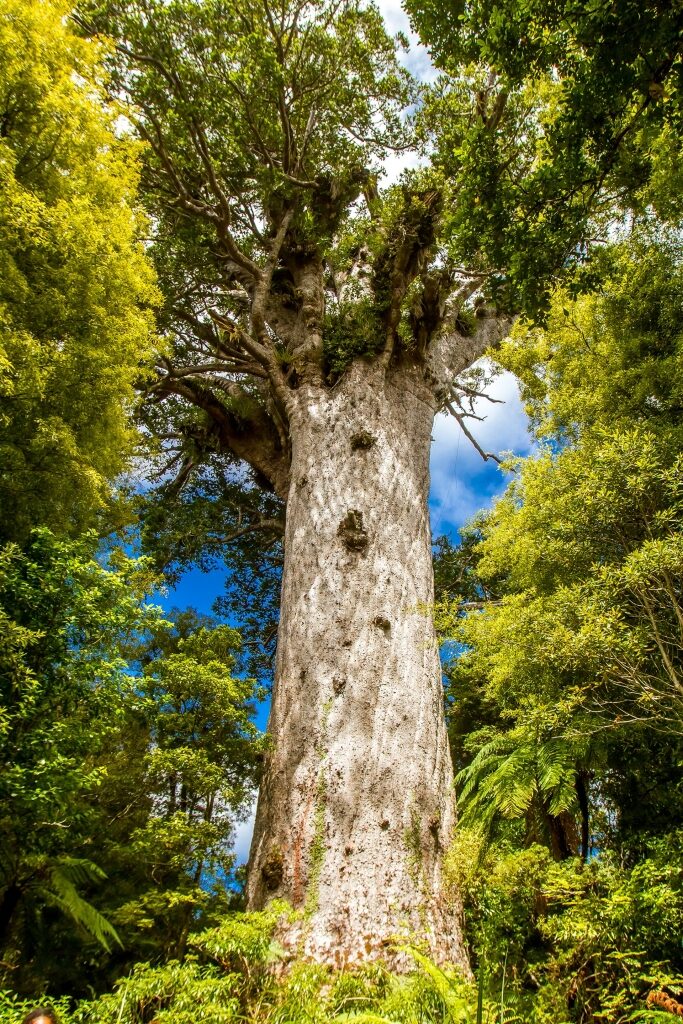
Tāne Mahuta in Waipoua Forest, Northland
Find your way through ferny paths to Tāne Mahuta, the country’s largest remaining specimen. This 51-meter tall “King of the Forest” is held in the same reverence in New Zealand as the General Sherman sequoia is in the USA.
Tāne Mahuta looks more like an abandoned stone tower than a tree, such is the girth of its lichen-mottled trunk. Hard to hug, perhaps, but easy to love.
Putangirua Pinnacles, Wellington
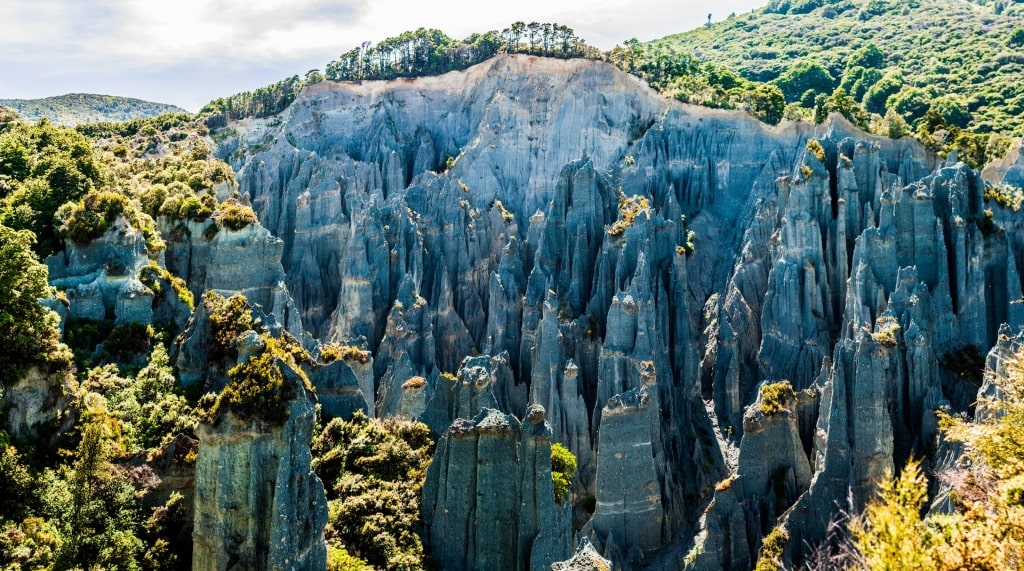
Putangirua Pinnacles, Wellington
Not only is Wellington the city with the best coffee and craft brews on the North Island of New Zealand, it’s also ringed by fascinating phenomena and intriguing destinations. The Putangirua Pinnacles Scenic Reserve, hidden away in the North Island’s southeast corner, is a prime example.
Embedded in the lush Aorangi Range, the Putangirua Pinnacles are a forest of rock spires the product of 100,000 years of erosion. Approaching the pinnacles is a cinch, with several enjoyable, well-marked walks ending at the site in less than an hour. Because of its out-of-the-way location, it’s a peaceful corner of the island to enjoy.
Urupukapuka Island, Bay of Islands
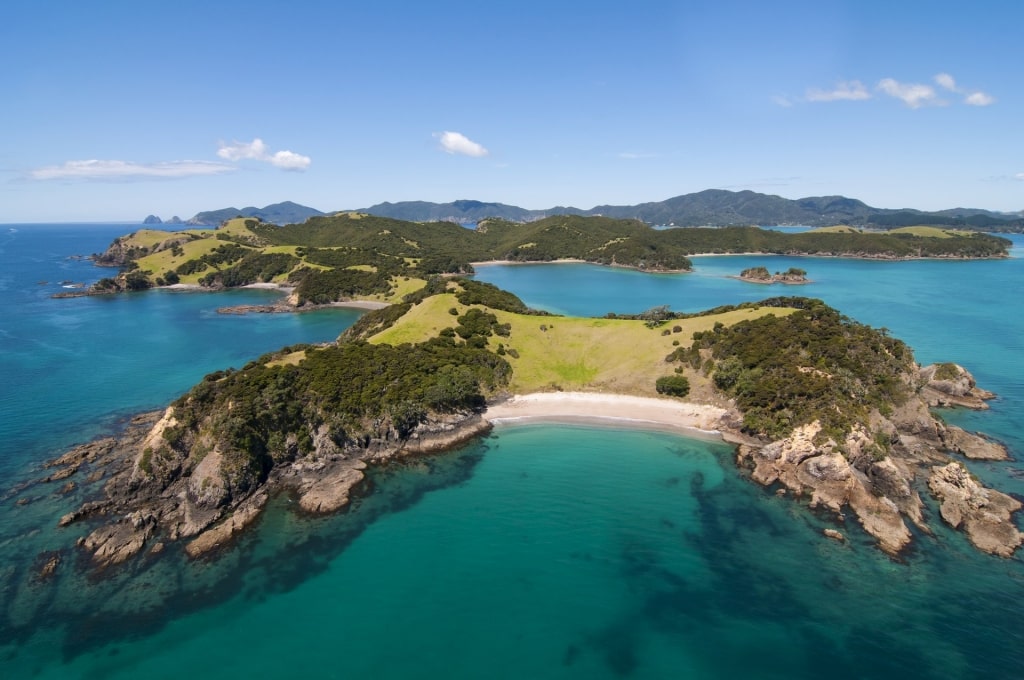
Urupukapuka Island, Bay of Islands
The largest island in the serene Bay of Islands, Urupukapuka Island is a place to wade, walk, and relax.
A popular mooring spot for yachts—as most naturally blessed islands tend to be—Urupukapuka, which translates as “a group of Puka trees” in Maori, seems almost purpose-built for dreamy day trips, its wrinkled shores a trove of secret coves and glistening beaches.
Arrive by ferry—about a 40-minute trip from Paihia—and you’ll disembark in verdant Otehei Bay. With its turquoise water, wide sandy beach, and waterside bar, you could almost call it a day here. Hire a kayak and hope some bottlenose dolphins appear at your prow. This is one of the most beautiful places in New Zealand for scuba divers as the volcanic seabed offers caves and kelp forests.
Above sea level, you’ll find that the island’s gentle contours, often ending in rugged cliffs, are organized into a series of easy-to-follow loop walks with beautiful 360-degree views of the Bay of Islands. Meander towards the south or the east sides of the island for the best swimming and beaches in New Zealand. Best of all, the island feels uncrowded, even in high season.
Art Deco Town Centre, Napier
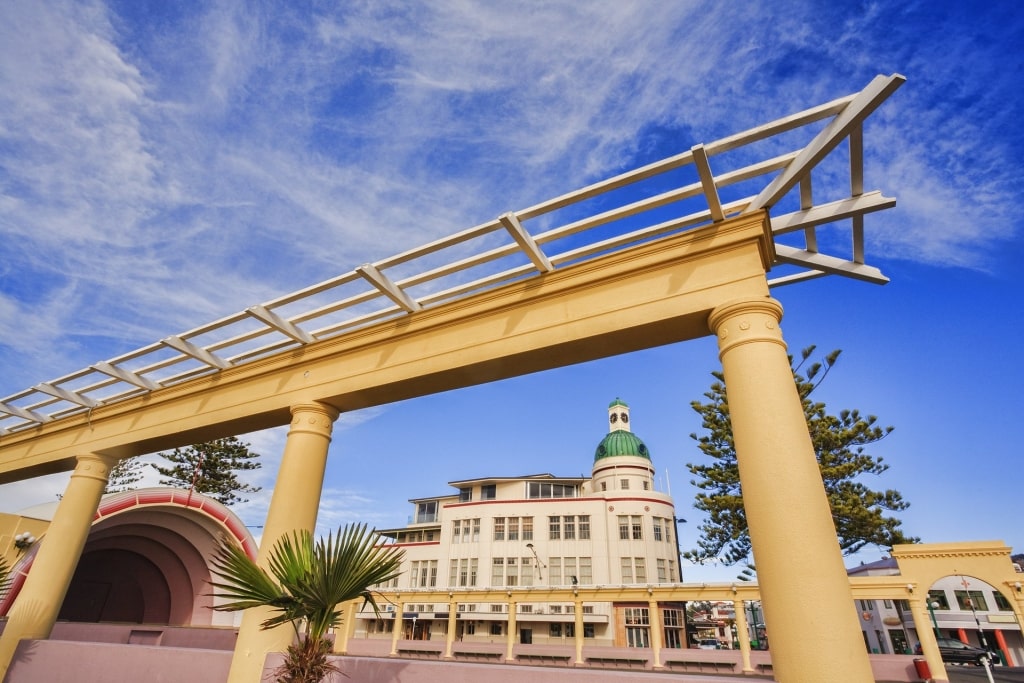
Art Deco Town Centre, Napier
Walking into the center of Napier, a seafront city on Hawke’s Bay, feels like you’re stepping back in time. After a devastating earthquake in 1931 leveled the old town center, reconstruction was completed in a number of attractive contemporary styles including stripped Classical, Spanish Mission, and its most prevalent, Art Deco.
Today, there are 140 timeless Art-Deco edifices to admire in its cheery city center. Pick up a cone of hokey pokey ice cream and a self-guided map and keep your eyes peeled for examples of Streamline Moderne and hints of stained glass. Visiting in February? Prepare for a vintage overload at the Napier Art Deco Festival, when the town fills with dressed-up locals and classic cars.
Waiheke Island, Auckland
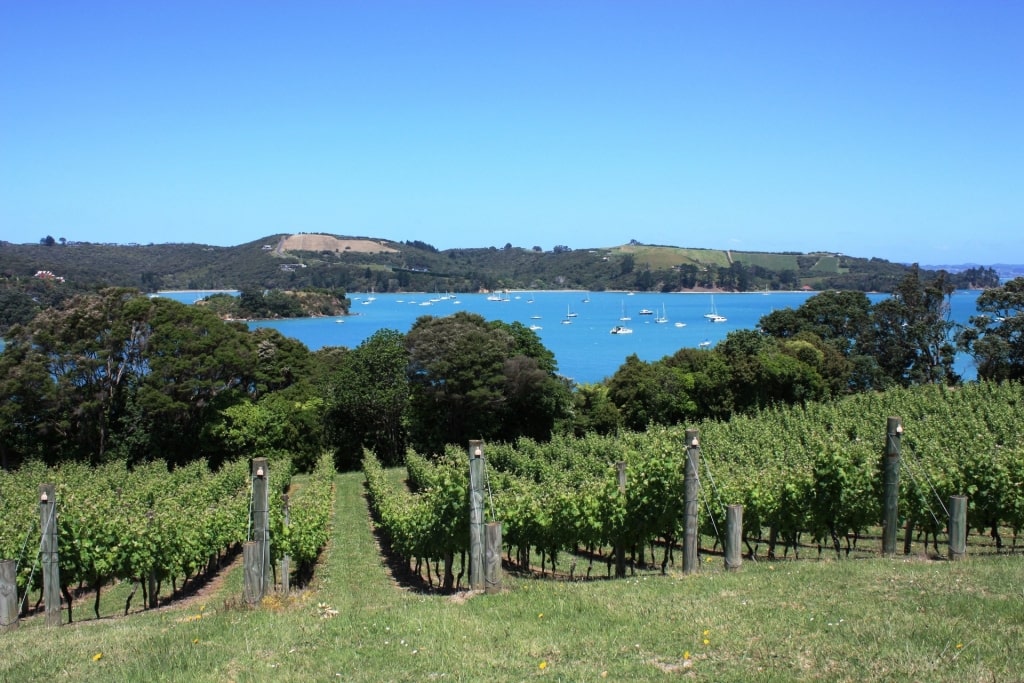
Waiheke Island, Auckland
Arriving on Waiheke Island, just a swift half-hour ferry ride from Auckland, it’s easy to understand what makes the second-largest island in the Hauraki Gulf one of New Zealand’s most sought-after addresses.
Covered in tiny coves and white-sand beaches, this boho isle is a crinkle-edged escape from Auckland’s urban throng. Best of all, its major export is quality wine. Waiheke’s grassy, gently rolling interior is a patchwork of over 30 vineyards, including big names such as Mudbrick, Cable Bay, and Stonyridge.
Hike between them before finding one of Auckland’s best beaches hidden with bobbing sailboats anchored in its cerulean waters. Round off your visit on this New-Zealand-in-miniature by making your way to the northwest coast for a spectacular sunset over Auckland’s skyline.
Hobbiton, Tauranga
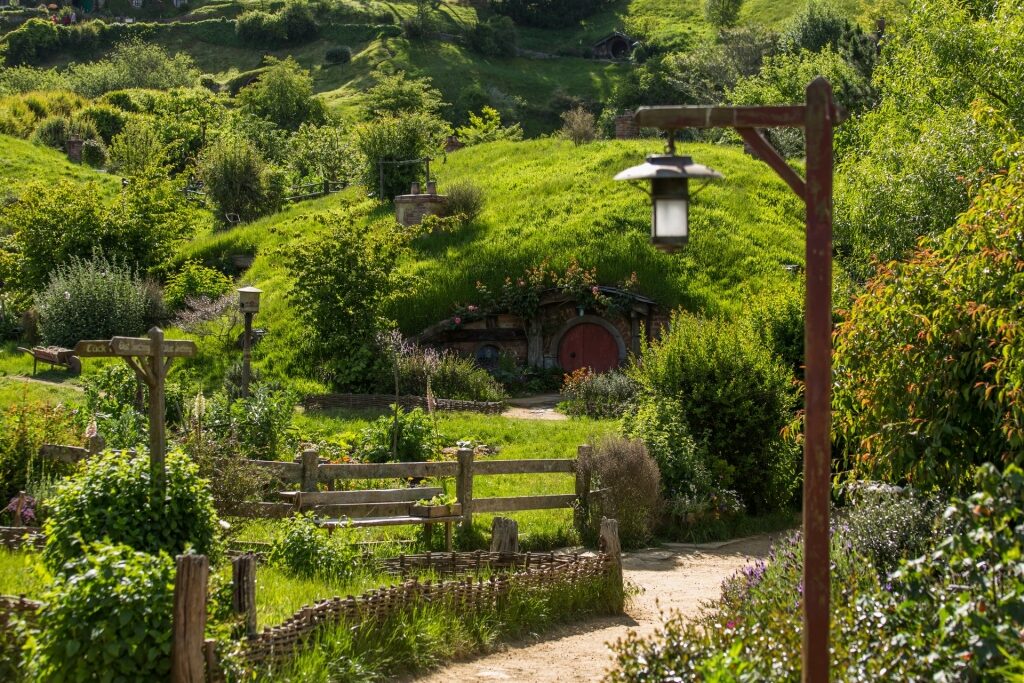
Hobbiton, Tauranga
Besides wine, rugby, and nature, New Zealand is known for its landscapes that have served as the backdrop to some of the world’s most famous movies. Hobbiton is an actual place you can visit on the North Island of New Zealand.
Originally built as a temporary set, the 44 hobbit holes you’ll find here were re-built to last in 2010 for a filming. Guided tours are available across the 14-acre patch of former farmland, which was chosen for looking like a slice of ancient England.
Zealandia Sanctuary, Wellington
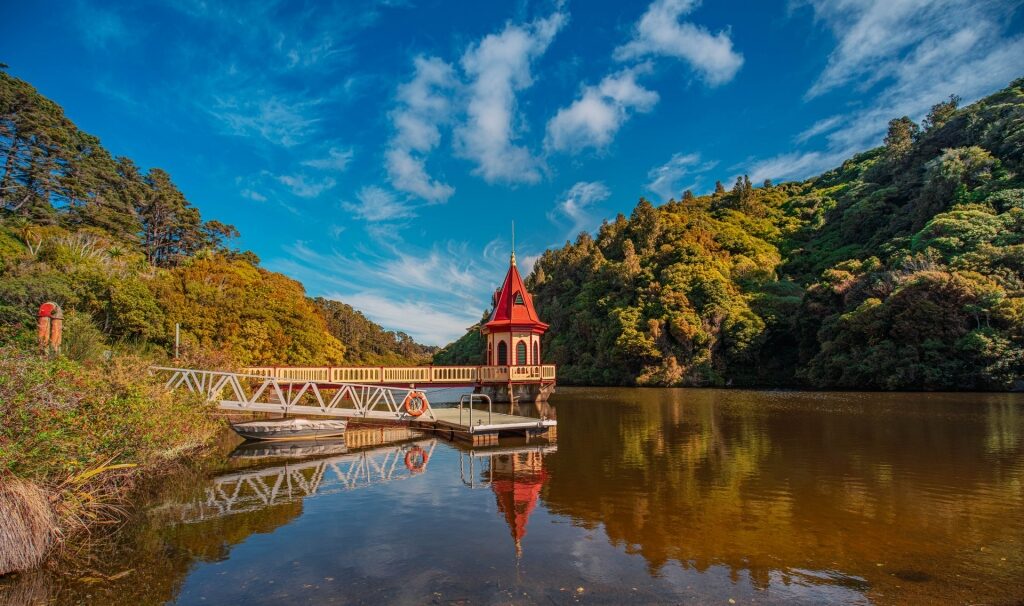
Zealandia Sanctuary, Wellington
One of the must-see places to visit on the North Island, the Zealandia Sanctuary is a fenced-in Eden for the country’s homegrown wildlife. Interlocking with the western neighborhoods of Wellington, this 500-acre eco-sanctuary was created 30 years ago to help arrest the devastation wrought on the defenseless indigenous creatures by invasive predators hitching a lift on European ships.
Inside its protective fences, you’ll enter a New Zealand of another era with free-roaming kiwi, spotted skinks, and something called a hihi. Little wonder it’s been named one of the world’s greatest places.
Ruakuri Caves, Auckland
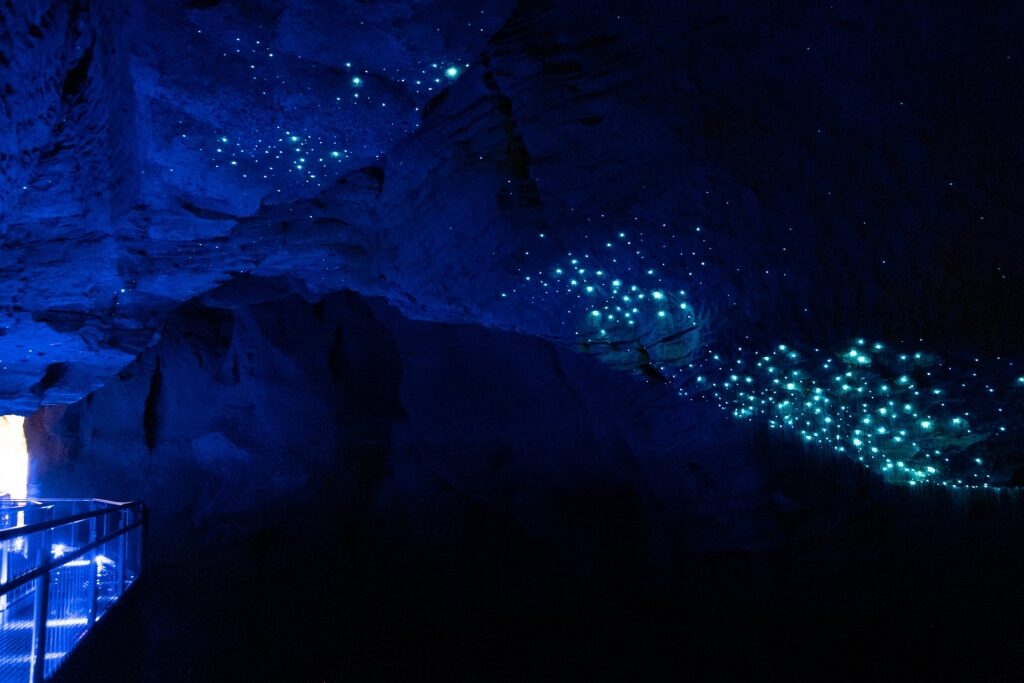
Ruakuri Caves, Auckland
As you descend the spiral ramp leading into the cool damp of the Ruakuri Caves, about an hour’s drive south of Hamilton, your mind will be on one thing and one thing only: gnats.
Ruakuri, and the connected Waitomo Caves, are famous for being one of the main locations to find a particular kind of cave-dwelling gnat that’s found only in New Zealand. Its tiny, luminescent larvae are the literal highlights of these extraordinary caves, forming celestial communities across the amorphous rock surfaces.
A guided exploration of the caves, first discovered by the Maori around 500 years ago, is the longest underground walking tour available in New Zealand. Besides the glow worms, you’ll wander through nature’s version of an underground sculpture park, with the sound of distant subterranean waterfalls providing the soundtrack for this unique experience.
Experience all of these unforgettable experiences and more on a cruise to New Zealand. From incredible natural vistas, astonishing Maori culture, and world-beating wines, New Zealand is a trip of a lifetime.
Browse our cruise itineraries online and book an incredible vacation to New Zealand.
